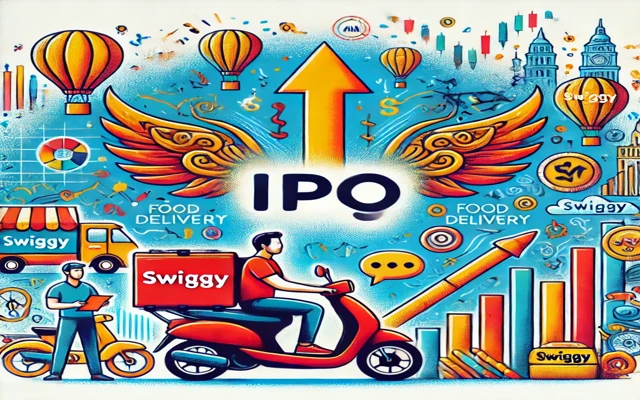As Swiggy sets its sights on a November 6 IPO, it’s gearing up for what might be one of the most critical public debuts in India’s tech and food delivery sector. Yet, with the market growing weary of the unprofitable unicorns that have burned investors in the past, Swiggy’s debut isn’t just about raising capital—it’s about convincing investors it can become profitable and sustain growth.
Lessons from the 2021 IPO Boom
The IPOs of 2021, including Paytm, Nykaa, and Zomato, were initially highly anticipated. But soon after listing, these stocks took a dive, with Paytm dropping almost 50% and Nykaa losing 54% of its value. Thus, the message was clear: public markets weren’t as forgiving as private investors. With public investors prioritizing profitability, the days of “growth at any cost” were on shaky ground.
Zomato: Since listing in July 2021, Zomato’s stock fell by 63% over the first year, only stabilizing after achieving profitability in FY24 with a net profit of ₹351 crore.
Paytm: Since its listing, Paytm has faced pressure to control its losses, reporting a net loss of ₹682 crore in FY24.
Nykaa: Despite being profitable at the time of its debut, Nykaa’s stock dropped by over 50%. Even with a modest ₹40 crore net profit in FY24, profitability alone couldn’t sustain its valuation.
These IPOs taught a hard lesson—companies heading to the public market now need to show a clear, near-term path to profitability.
Swiggy’s Financial Footing
For Swiggy, the stakes are high with its ₹11,300 crore IPO. The company has reduced its losses in FY24 to ₹2,350 crore, nearly halving its previous fiscal loss. Revenues have grown, too, with a 36% increase to ₹11,247 crore. Despite this, the losses persist, and the Q1 FY25 loss even widened slightly from the prior year.
Bankers advising Swiggy are keenly aware of this financial aspect, and investment experts are now insisting on clearer profit forecasts than ever before. The current sentiment from bankers is clear – Swiggy must assure the market that profitability is within reach, ideally in the next two to three quarters.

The Quick Commerce Push
In an ambitious pivot, Swiggy’s IPO plan places a substantial focus on quick commerce. With fierce competition from BigBasket, Blinkit, and Zepto, Swiggy has increased its primary funding target, specifically boosting its capital allocation for its quick commerce division, Instamart. This includes an additional ₹1,179 crore for expansion, marking a 20% increase from previous plans. This is a strategic bet on India’s booming e-commerce market, where fast deliveries and convenient access are the winning formulas.
Central to Swiggy’s quick commerce push is the expansion of its dark store network, which are dedicated hubs for rapid online order fulfillment. With ₹755 crore earmarked for growing its dark store footprint, and an additional ₹423 crore for leasing and licensing, Swiggy aims to reach 741 dark stores. Competitor Blinkit, with 791 dark stores, underscores the heated race in this space.
Can Swiggy Succeed?
Swiggy has undeniably positioned itself to take advantage of India’s rapidly expanding digital and e-commerce sector. However, the question is whether this bet on quick commerce can be the lever to swing it toward profitability—or if it will add to the cost-heavy load already straining the bottom line. Swiggy’s focus on speed and convenience aligns well with evolving consumer habits in the world’s most populous country, where smartphones and the internet are essential tools for shopping. Even Mukesh Ambani is making moves in this segment, emphasizing its attractiveness.
For Swiggy’s IPO to truly be a “swing toward profitability,” it will need to assure the public market that it’s not just chasing growth but building sustainable value. Investors, already cautious, will be watching closely for the company’s ability to not only scale Instamart but to reach the profit milestones needed in the quarters to come. If Swiggy can pull this off, it just might pull off a home run; if not, it risks joining the ranks of once-hyped but now scrutinized IPOs.









